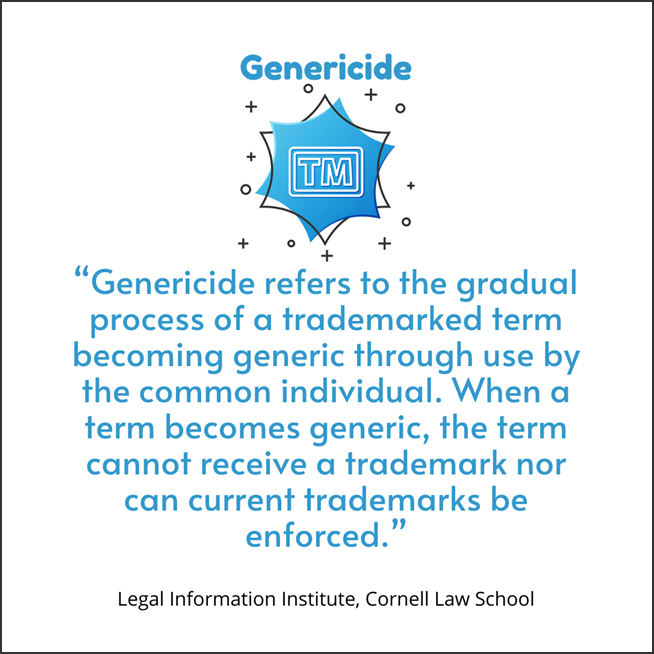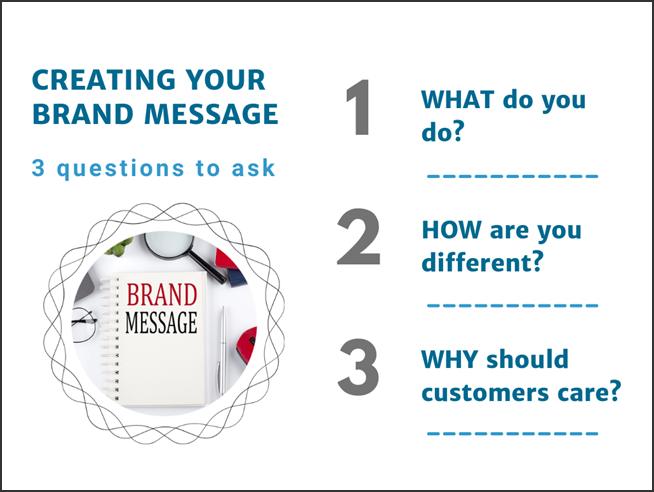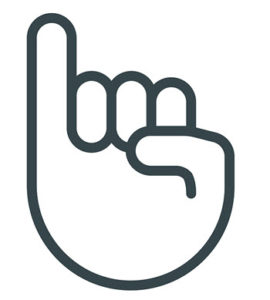 Imagine your brand becoming a universal business term. Sounds great, doesn’t it? Well, maybe not.
Imagine your brand becoming a universal business term. Sounds great, doesn’t it? Well, maybe not.
Xerox is one company that grappled to change public perception of its brand. The following shares the story of Xerox and other businesses whose brands became more than they expected.
Not necessarily a bad thing but can it go too far? What can you do to maximize your brand effectiveness?
Brand This
If you want your administrative assistant to photocopy a document, do you ask, “Would you Xerox this for me?”
- Okay, so I am assuming you have an administrative assistant
- And you are a good boss who asks – not tells.
Xerox became synonymous with photocopying. Other firms had similar identity issues.
- Kleenex for tissues
- Band-Aid for adhesive bandages
- Google for browser search
Generically Speaking
Just like the Google name became a verb, the noun generic evolved into genericize. As appreciative as companies may be for the recognition, limiting a product to a single branded name can be a problem. How?
Death by Popularity
If the brand name becomes too common, the name risks becoming a generic term. The legal term for this occurrence is Genericide.

I guess that’s the price you pay for being too popular. Losing your trademark is a big deal. Now does it make more sense why a business would shun that kind of popularity?
Xerox developed a media campaign to counteract the genericized reference. Below is some of the ad text (not their actual ad) from their campaign.

You may never encounter genericide in your business. But you can encounter a brand identity problem. So, what can you do to protect your brand? The following are a few suggestions.
Brand Diversity
Few businesses offer a single product or service. You may develop separate brands for your products or services. For example, Xerox developed brands for various lines of business services, such as Xerox DocuShare® and ConnectKey® apps.
On a much smaller scale, my niche in business writing is healthcare. So, I developed two sites. This one – Simply Stated Business – and a healthcare one – Simply Stated Healthcare. Since I semi-retired, I have put the healthcare one to bed.
So, consider if it makes sense to develop separate brands. You can tie them together under your main brand (e.g., Simply Stated).
Brand Identity
A brand identity crisis, such as the Xerox photocopier problem, produces two significant problems.
- Limits recognition of a single product to one name
- Infringes on trademark protections (e.g., Johnson & Johnson owns the “Band-Aid” trademark)
The following tips relate to your brand identity. What can you do to build brand awareness for all your products/services?
 Tip #1 – Be visual.
Tip #1 – Be visual.
Businesses often contribute to their identity problems with overly complex communication. Keep business communication and branding simple.
By using visuals, you help customers recognize your brand.
- Use logos/taglines – Customers connect the visual with your brand and remember it. Picture Nike and its famous swoosh.
- Include symbols for registered and non-registered trademarks (® or ™) applied to your product or service to distinguish your brand from competitors.
- Use format/design elements to stand out – for example, bold product names or customized brand colors.
Avoid vague, confusing or cliché content in your design. For some great examples of taglines gone wrong, check out the Tagline Hall of Shame.
Reinforce your brand by keeping it simple.
Tip #2 – Be clear on your message and market.
 Have you seen the rebranding of Weight Watchers? The company had the same brand name for over half a century. Yet, it decided to change its name to WW in 2018, complete with a new logo.
Have you seen the rebranding of Weight Watchers? The company had the same brand name for over half a century. Yet, it decided to change its name to WW in 2018, complete with a new logo.
I only recently found out the new WW name was short for Wellness that Works™. Did you know that? Or were you like me and figured it was the initials for Weight Watchers?
- The company says it is “moving beyond weight to wellness.”
- But the change and its advertising confused consumers.
- The company’s stock fell 34% after rebranding.
Instead of understanding the company’s shift to wellness, reviewers of the advertising criticized the company for its confusing and unclear message. Be careful about messing with success.
What is your brand message?
Do you know what your brand message is? How about your target market?
Even if you do not formalize logos and taglines, you should have a clear idea on what your message is. Although logos and taglines help (in my humble opinion).
Ideas for a clear message
If you do not know the answer to the following questions, your customer is unlikely to know (or care). Jot down your responses to:
Examples:
- What message do you want associated with your business? (Burger King’s special orders don’t upset us)
- Who is your market? (Apple consumer versus Microsoft)
To get started on creating your brand message, ask yourself the following.

Once you nail the answers to those three questions, your message becomes clear.
Tip #3 – Be relevant.
You may have what you consider the best message ever. But what does your target market think?
- Does your message resonate with them?
- Does your brand deliver what’s relevant to them?
Remaining relevant can be a moving target. At times, there is danger in too much success. Think Blackberry.
When I started my business writing company, my smartphone of choice was the Blackberry. It was a great fit for my needs. The email and calendar features were as smooth as silk.
Then a bit of arrogance seemed to creep in.
- The company scoffed at touch screen technology.
- It probably ignored Apple’s consumer appeal a bit too much.
- The result was a mad dash to catch up.
Blackberry became irrelevant to a large part of the market.
Tip #4 – Be consistent.
Inconsistent branding is as deadly as no brand at all. Like the rebranding of Weight Watchers revealed, it is not easy to introduce new concepts to a well-established brand.
Mixed Message Formula
Do you remember the New Coke product? In case you are too young, here is a quick recap.
- “New Coke” – The Coca-Cola Company introduced a sweeter drink, replacing its iconic Coca-Cola product.
- Refresh the Brand – Its hope was to refresh its brand and regain market share in the highly competitive industry.
- “Classic Coke” – Instead, the change raised a huge outcry. “Classic” Coke (the original formula) soon returned to the shelves.
Coca-Cola WAS the brand; first sold back in 1886. Replacing it was probably not one of the best moves. However, some believe the move was a clever marketing ploy to boost sales after the return to the original. You be the judge.
 Reneging on the Promise
Reneging on the Promise
Don’t you hate when someone goes back on what they promised? Inconsistent branding can produce that same feeling.
For example, if you market full customization of your products and then balk at a request, your message is inconsistent (at best). A brand commitment of full customization is a promise to your customer. When you back off that, you are reneging on a promise.
Be careful what you promise.
Simple & Clear
Not everyone is into lists or writing stuff down. But I find it is a simple way to keep me focused and provides a good benchmark for what I hope to achieve.
So, even if your business is the size of one, the following written support may help your branding efforts.
- Style Guide – Develop a brand style guide for message/design consistency, including font, color palette, logos, and taglines.
- Policies & Procedures – Create policies and procedures for customer service. For example, if you offer a money-back guarantee, say so in your branding and then stick to it.
Develop a clear brand message. Be relevant. Be consistent. Repeat often.
Tip #5 – Be you.
Businesses run into problems when they try to be all things to all people. You should be aware of what competitors are doing but you do not want to be your competitor. Where is the uniqueness in that?
Identify what is unique about your business product/service. Simple, right?
Some businesses struggle with moving beyond generic descriptions. A good test is to ask others what is unique about you and your business. You may be surprised.
When I went back to college, an instructor asked each student to identify what was unique about them. At the time, I stumbled over my answer. One of my fellow students replied, “Your jewelry.”
My jewelry???
I never thought about it, but I did purchase unique jewelry because I hated wearing what everyone else wore. It was an Oprah-like aha moment.
- I recognized my middle child of seven need for uniqueness.
- It has since become a part of my brand.
- I search for the uniqueness in each business.
Photocopy Xerox Brand Success
No matter if you are a giant corporation like Xerox or a sole proprietor, you can improve your brand identity.
Keep your communication simple, clear, and uniquely yours.
- Be visual.
- Be clear on message/market.
- Be relevant.
- Be consistent.
- Be you.
What tips do you have for a simple, clear, and unique brand? Please share them in Comments.
==================================
==================================
Note: In 2015, SSB took a year-long alphabetic journey for better business communication. Each post contained an A-to-Z topic for creating better business communication. This ‘X’ post originally published on November 30, 2015, and this July 12, 2022 version updates it. The plan is to update each alphabetic post. Hopefully, it will not take a year to complete. 😊
===================================

Interesting… I say ‘google this and google that’ and I mean use google to search for whatever… once in a great while I check and see how bing lists my sites, but it’s back to google for everything else… and Google’s browser is Chrome… I never say chrome this or that unless I want something metal turned into a shiny chrome-look – worth thinking about it seems.
Yep, I think Google will be forever linked to its verb version.
As a Xerox employee who spent 10 years licensing the Xerox brand, I hear ya! Great article!
Always good to hear directly from the source. 🙂 And I appreciate the nice words. Thanks for stopping by, Craig.
Kids, this is what evergreen content looks like. you’re welcome.
LOL
This is useful to me NOW, Cathy, as I start my Puzzle Book publishing empire.
Cheers,
Mitch
So glad to hear that, Mitch. Can’t wait to hear about your Puzzle Book.